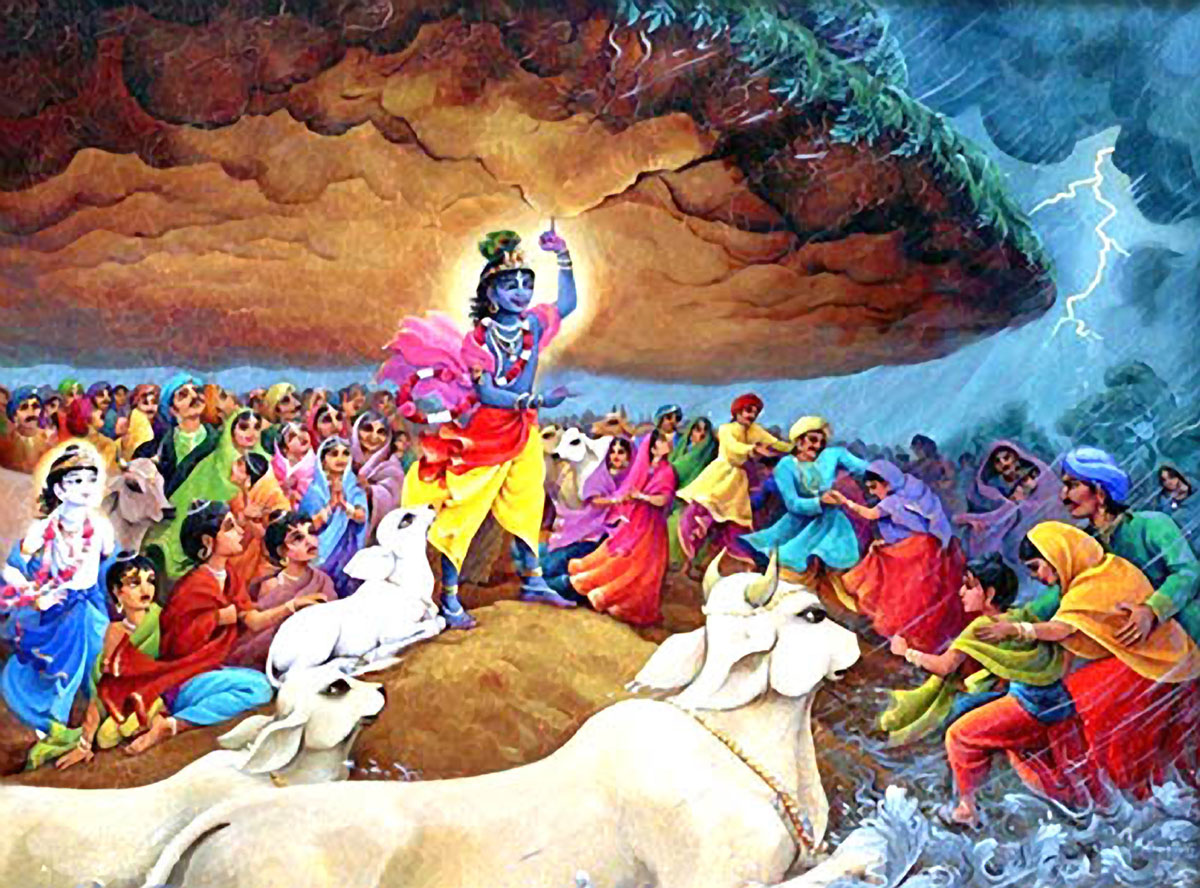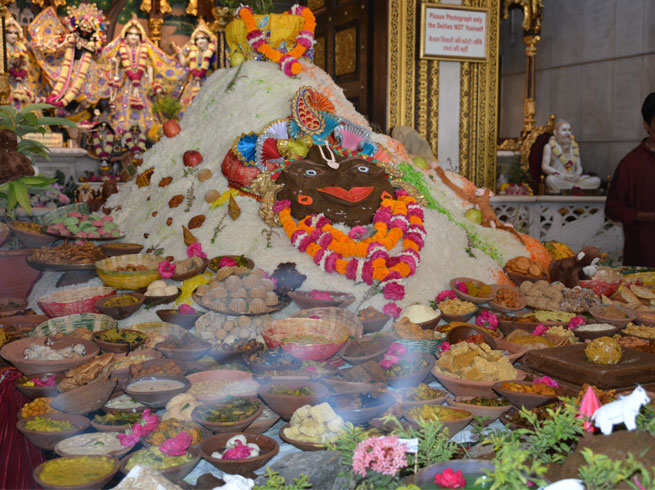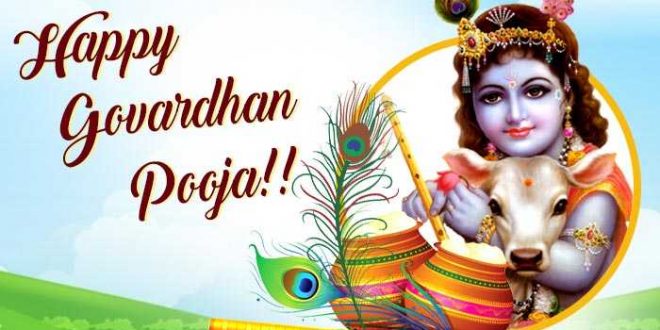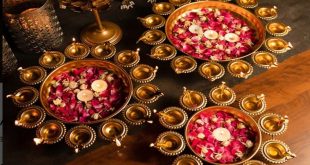Diwali is almost a month-long festival in many parts of India. However, the first five days of the Diwali festival are considered most important. Diwali begins with ‘Dhan Teras’. It is followed by ‘Narak Chaturdashi’, ‘Laxmi Pujan’, ‘Padwa or Govardhan Puja’ and finally ‘Bhai Dooj’. All these days have their special meaning and significance according to the Hindu traditions.
The 4th day that is called ‘Diwali Padva’ in some parts of India is also referred to as ‘Govardhan Puja’ in North India. In states like Punjab, Haryana, Bihar, Uttar Pradesh etc, this day is celebrated with great fervor. People of all ages participate in the ‘puja’ that is performed on this day.
Mythological Significance of Govardhan Puja
According to mythological descriptions in Vishnu Puran, the people of Gokul worshipped Lord Indra, the God of Rains, for providing them with ample rain for their crops. Indra became very proud at that time. Lord Krishna told the people of Gokul that it was not Indra but the Govardhan Mountain (parvat) that caused rain in Gokul and that they should worship the Govardhan parvat instead of Lord Indra. This infuriated Lord Indra and he caused excessive rainfall with thunder and lighting and flooded Gokul. Lord Krishna, in order to ensure the safety of the people of Gokul prayed, worshipped and offered puja to the Mount Govardhan and lifted it on the little finger of his right hand. People of Gokul along with their cattle took shelter under it and thus were saved from the calamity. It is to remember this occasion that Govardhan Puja is still done in India.

Govardhan Puja Celebrations and Interesting Facts
Govardhan Puja is celebrated with great enthusiasm by people in the Northern part of India. There are traditional ways to celebrate this occasion.

- To represent the Govardhan parvat, a heap of grains is worshiped by decorating it with flowers and garlands. This is called ‘Annakut’, meaning heap of grains. After the worship, the grain is ‘looted’ as part of the festival tradition.
- ‘Go’ or ‘gau’ means cow and ‘vardhan’ means growth and nourishment. A cow is believed to be the most sacred animal in the Hindu tradition. People in some parts of India, especially in Haryana, make small hillocks of cow-dung to represent the Govardhan Mountain which is then decorated and worshiped by moving in circles around it.
- In the rural parts of India, along with the worship of the effigy of the Govardhan Parvat, farmers, as well as the cattle-owners, offer gratitude towards their fields, cattle and the tools of their trade by worshiping them. They decorate their cattle with colors, flowers, garlands, beads, bells and other decorations. It is believed that this worship brings better crops and thus prosperity and happiness in their lives.
- The effigy made of cow dung is crushed to the soil by the hooves of their cattle in the evening when the festival is over.
- Another community ritual that is followed is preparing of ‘Annakut’ at temples and homes – a meal with Baajre ki khichdi, Kadhi, and Mixed vegetables. People offer ingredients like wheat flour, rice, baajra, sugar, vegetables, besan, etc. at the temples. Ladies of the neighborhood join in preparing the ‘Annakut’, which is then distributed at Prasad after the Puja. People gather at temples or join their extended families at a relative’s home to worship Govardhan parvat (made out of cow dung). Men, women and children take rounds of the constructed Govardhan parvat, and sing, “Govardhan Mahu tuhi bada, tujhse bada na koi…’. “You are the greatest of all, nobody is greater than you!”

- There is a lesser-known yet deeper spiritual meaning behind the word Govardhan. According to it, ‘go’ means our five senses and ‘vardhan’ means the diversion of these senses from the worldly desires towards Lord Krishna.
Being part of the Diwali festival, Govardhan puja is celebrated in most of the northern parts of India with immense enthusiasm. Like all other festivals it effectively illustrates the astonishing spiritual understanding behind the ancient traditions of India.
You May Also Like:
- Trending Diwali E-Invites in 2019
- Diwali Party Ideas for 2019
- Diwali Cards Party Ideas for this Season. Spread the Aura of Happiness!
- 5 Ways to Celebrate An Eco-Friendly Diwali
- How to Celebrate Diwali at Office
- Brighten up This Diwali with Diyas and Candles
- Some Glittering Ideas for a Scintillating Corporate Diwali Party
- How to Throw a Casino Party
- Celebrating Dhanteras – The Festival of Wealth and Prosperity
- Bhai Dooj – A Brother-Sister Festival of India
- Kitty Party Ideas and Themes for Diwali
Have you sent out invitations for your upcoming event? If not, save paper and send free online invitations now.
Looking for a party venue? Browse and book best-suited party venues from VenueLook.com
 VenueLook Blog Party and Event Planning Tips, Resources and Venues
VenueLook Blog Party and Event Planning Tips, Resources and Venues










